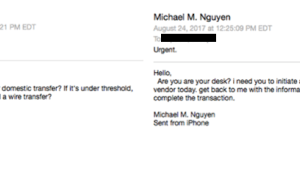Blog
Using Reported Phish to Hunt Threats
Tue, 07/10/2018
Reported phishing emails are useful for plenty of reasons.
They help you measure cyber risk, study common attack trends, and even provide inspiration for your own phishing simulations.
One of the security functions that benefit most from reported phishing emails is threat hunting, the process of identifying threats quickly so they can be contained before any major damage is done.
Reported...
















